Fun Facts About Mars
Fun Facts About Mars

Mars is a cold desert world, and is the fourth planet from the sun. It is half the diameter of Earth and has the same amount of dry land. Like Earth, Mars has seasons, polar ice caps, volcanoes, canyons and weather, but its atmosphere is too thin for liquid water to exist for long on the surface. There are signs of ancient floods on the Red Planet, but evidence for water now exists mainly in icy soil and thin clouds.

Earth has one, Mars has two…moons of course! Phobos (fear) and Deimos (panic) are the Red Planet’s two small moons. They are named after the horses that pulled the chariot of the Greek war god Ares, the counterpart to the Roman war god Mars.

The diameter of Mars is 4220 miles (6792 km). That means that the Red Planet is twice as big as the moon, but the Earth is twice as big as Mars.

Since Mars has less gravity than Earth, you would weigh 62% less than you do here on our home planet. Weigh yourself here on the Planets App. What’s the heaviest thing you’ve ever lifted? On Mars, you could have lifted more than twice that! Every 10 pounds on Earth only equals 4 pounds on the Red Planet. Find out why HERE.

Mass is the measurement of the amount of matter something contains. Mars is about 1/10th of the mass of Earth.

Mars and Earth are at their closest point to each other about every two years, with a distance of about 33 million miles between them at that time. The farthest that the Earth and Mars can be apart is: 249 million miles. This is due to the fact that both Mars and Earth have elliptical orbits and Mars’ orbit is tilted in comparison with the Earth’s. They also orbit the sun at different rates.

The temperature on Mars can be as high as 70 degrees Fahrenheit (20 degrees Celsius) or as low as about –225 degrees Fahrenheit (-153 degrees Celsius). How hot or cold the surface varies between day and night and among seasons. Mars is colder than Earth because it is farther from the sun.

You know that onions have layers, but did you know that Mars has layers too? Like Earth, Mars has a crust, a mantle and a core. The same stuff even makes up the planet layers: iron and silicate.

Ever wonder why it’s so hard launching things to space? It’s because the Earth has a log of gravity! Gravity makes things have weight, and the greater the gravity, the more it weights. On Mars, things weigh less because the gravity isn’t as strong.

Take a deep breath. What do you think you just breathed in? Mostly Nitrogen, about a fifth of that breath was Oxygen and the rest was a mix of other gases. To get the same amount of oxygen from one Earth breath, you’d have to take around 14,500 breaths on Mars! With the atmosphere being 100 times less dense, and being mostly carbon dioxide, there’s not a whole lot of oxygen to breathe in.

Mars has about 15% of Earth’s volume. To fill Earth’s volume, it would take over 6 Mars’ volumes.
For more fun Mars facts, visit HERE.
Make sure to follow us on Tumblr for your regular dose of space: http://nasa.tumblr.com
More Posts from Astrotidbits-blog and Others

Starry Night Castle. Credit & Copyright: P-M Hedén
The Pleiades star cluster seems to lie just beyond the trees above a dark castle tower in this dramatic view. This starry sky also features bright star Aldebaran below the Pleiades and a small, faint, fuzzy cloud otherwise known as Comet Holmes near picture center at the top of the field. Starry Night Castle might be an appropriate name for the medieval castle ruin in the foreground. But its traditional name is Mörby Castle, found north of Stockholm, near lake Skedviken in Norrtälje, Sweden.
My Radio-inActive Life
I am a non-practicing amateur radio operator. K4EYO is my callsign. I have a General Class license, but I got that after the FCC did away with the Morse code requirement, so to some people that doesn’t really count.
There is still the Extra class license out there, my one last goal, the pinnacle, the zenith of the U.S. Amateur radio licensing system. I’m putting that off, because once I pass that test, well, what’s left? I already have the Holy Grail of licenses, which is the General Radiotelephone Operator’s License (GROL). But that’s for working on radio equipment on ships in the Great Lakes and in the oceans, and also for supervising avionics techs, or something like that. In other words, very non-amateur. It’s a lifetime license, so I don’t have to deal with renewing it, which is the coolest thing about it, to me.
Ancient History
When I was a kid, way back in the 60’s my best friend’s dad was a Ham (that’s what we call ourselves in Amateur Radio-Land) and he tried to teach a bunch of us kids Morse code via LPs. We sat in the basement and wrote down what we heard, or what we thought we heard. I hated it. But he had a great ham shack (equipment room) with lots of postcards (QSL cards) from his radio contacts all over the world. Cool. He also took us to the local radio club meetings in nearby Hazel Park, MI. All I remember from that was all of the cigar smoke and the swap meet equipment - old Hallicrafters and Heathkits. These were the computer geeks before there were computers.
And that was it for my radio experience. We moved to Atlanta and my attention was refocused on not being beat up by the various gangs at my new high school and pretending to like Elvis.
Not So Ancient History
Years later (1990-ish) I wound up going to a technical school in the mountains of North Georgia, which is a story for another day. But there I could pick from auto mechanics, brick-laying (yep!), practical nursing, electrical wiring, and electronic technology. They used to have watchmaking(!), which is what I would have taken, but instead I settled for the electronics program.
We had a couple of old guys who taught us all about analog circuits, tubes (we had a room full of tubes - must be worth a fortune now), and antennas. I loved this stuff.
We also had a younger guy who taught us about digital circuits, PLCs, assembly language, and who asked me at one point what the hell I was doing there, and not in a university somewhere.
I owe him a debt of gratitude for encouraging me.
It was here that I got my Technician class license and my GROL (first person in something like 15 years from the school). We re-established the dormant radio club at the school, which had three or four members. We’d go to hamfests (conventions for radio geeks), and talk to each other on 2 meter radios in our respective cars. We strung antennas up on the roof of the classroom. We also tried to communicate with MIR as it made its passes overhead, along with the other thousands along the east coast. Remember MIR? From Wikipedia, ca 1993:
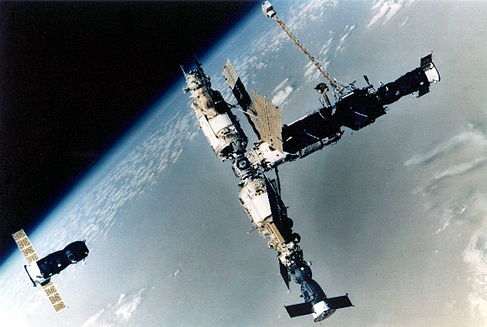
One guy had an HF setup at home. I just had a mobile 2m radio in my VW Bug, and a 2m handheld radio that stayed on my hip, as I played geek wannabe.
A Slight Divergence- typewriters
We moved back to Atlanta and my new skills got me a job repairing typewriters (actually, the auto mechanic track would have been more useful). This was a very cool job, but the pay was terrible. But I learned how to repair/adjust IBM Selectrics via sets of slides in Carousel trays, and older mechanical machines like Smith Coronas, Remingtons, Olivettis just by figuring them out. I keep thinking this is what I’d do if I started my own business. But then I come to my senses.
White Collar Work
Then I got into call center work, first answering phones, then managing, then building them as a project manager. This was the period where I’ve earned the most money so far.
The problem with project management is that by definition, projects are temporary. And so are project manager jobs. At this time there was also a huge movement to move call centers to India, and I didn’t like the thought of that commute.
Blue Collar Work
After being unemployed for 7 months I went to a Georgia Department of Labor job fair in 2001, where the local transit authority (MARTA) had a recruiter looking for radio techs. I was the only one there who had radio licenses and education (the line for computer maintenance/IT jobs was a mile long). 2 months later I had a job and became underemployed.
So now I was in a real radio shop! I could talk about radios, bring in my equipment to adjust and tune…
Nope. Only one had a ham license, the old-timer. The rest of them couldn’t care less about radios. And to add injury to insult, we were not allowed to work on our own stuff, even off the clock.
But I did get great training on 800 mhz trunking systems. And it got me motivated to go to college to get a degree in Economics (“you won’t get rich studying economics, but at least you’ll know why”, as the old joke goes.)
Back to White Collars
It was a few months after graduation that I got a new job at MARTA, as a Maintenance Planner for the computer maintenance group. 7 years later and I’m still doing that. Still not getting rich.
Urban Radios
This is when I upgraded my license to “General” and started putting together a radio setup. But we live in a high-rise, so antennas are more of a challenge. And to keep from singeing the fur on the cats, I had to look at low power (QRP) systems. I have always preferred these anyway, just to be an iconoclast amongst the iconoclasts.
For decades the radio magazines touted home-built (or store bought) 1000 watt or more systems. Just blast that signal out there, power bills & other people’s TV reception be damned! Not really, RFI is bad.
QRP systems appeal to me just like bicycles and economics appeal to me: Efficient use of resources.
So I’ve built assembled a little 40 meter radio, and built assembled an iambic paddle and have built assembled a meter in an altoids can. Now I just need to revisit my old nemesis, Morse code.
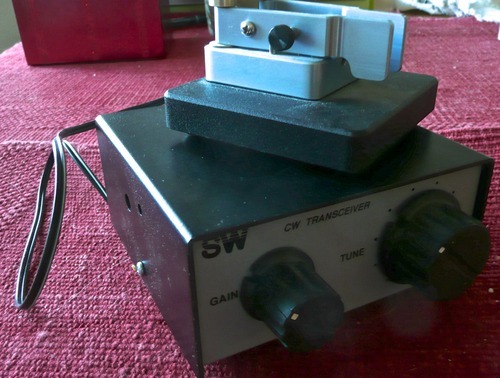
See, these low powered, efficient systems are that way because they don’t transmit voice. No fat sidebands. But they only use 3 watts instead of 100 or 1,000.
So I need to string up some wire, or build some exotic coil loaded beast to transmit from the living room, which could double as a scratching post for the cats. And then we’ll be in business.
Now
And six years later nothing has changed, except for the thick layer of dust on my stuff. I really should wire it all up and at least listen to chatter out there.
But I also need to make a shirt, finish the kitchen cabinets, build a workbench…

Goodbye to M42 for this year. But I’ll see you again in November. Meanwhile I can look at this picture I took in January of this year.
www.astrotidbits.com

SpaceX Plans to Send 2 Tourists Around Moon in 2018
“While the trip appears to be within the technical capabilities of SpaceX, industry observers wondered whether the company could pull it off as quickly as Mr. Musk indicated. “Dates are not SpaceX’s strong suit,” said Mary Lynne Dittmar, executive director of the Coalition for Deep Space Exploration. The Dragon 2 and Falcon Heavy are years behind schedule and have yet to fly.“It strikes me as risky,” Dr. Dittmar said, adding that autonomous systems are not infallible. “I find it extraordinary that these sorts of announcements are being made when SpaceX has yet to get crew from the ground to low-Earth orbit.””



“JUNO PROBE MAKES HISTORY BY ENTERING JUPITER’S ORBIT AFTER FIVE-YEAR JOURNEY”
Last night, NASA and its Juno probe made history by entering a new probe in orbit around Jupiter. The Juno spacecraft, which had left Earth five years ago, finally entered Jovian orbit after a 35 minute rocket engine manoeuvre to slow down its approach to the planet and get caught by its gravity. Unlike other engine firings in the past, Juno’s manoeuvre was especially dangerous since no previous spacecraft had ever dared to pass so close to Jupiter; its intense radiation belts can destroy unprotected electronics. Luckily, since the probe was built like a tank with titanium shielding, a few minutes later, a sequence of tones transmitted from the spacecraft confirmed the braking manoeuvre had been a smashing success prompting wild cheering at NASA’s mission control in Pasadena, California. “All stations on Juno co-ord, we have the tone for burn cut-off on Delta B,” Juno Mission Control had announced. “Roger Juno, welcome to Jupiter.” Juno’s main objective is to sense Jupiter’s structure and chemistry to gather clues on how the gas giant formed some four-and-a-half-billion years ago. However, much of this observation will not take place until mid-October when Juno performs a second rocket engine burn to tighten its orbit to just 14 days. By then, Juno will be able to answer some interesting questions about the planet including where it formed in the early Solar System and whether Jupiter has a solid core or a core made of compressed gas. After the mission ends, Juno is scheduled to dive into Jupiter’s atmosphere in February 2018 to ensure that there is no possibility of it crashing into and contaminating any of Jupiter’s large moons.
Read more about this fascinating story on: http://www.bbc.com/news/science-environment-36710768
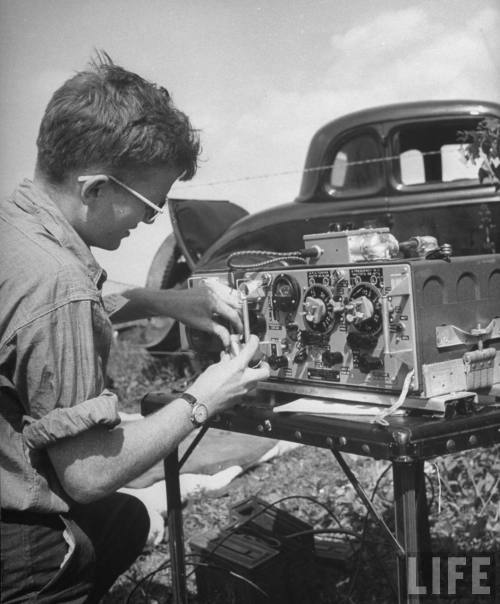
Ham radio operator taking part in a field day
(Walter B. Lane. 1946)
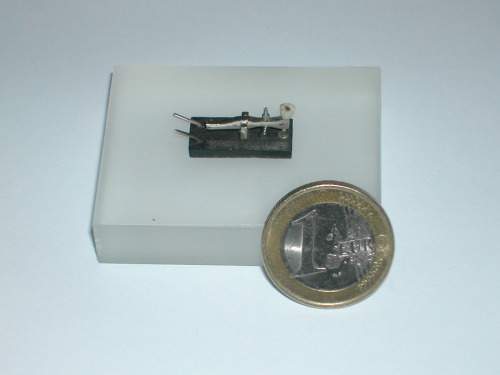
This full functional CW Keyer was built by a spanish jeweler with watches parts. He gave it to me, as a gift, ten years ago.


Jupiter’s Great Red Spot is such a crazy, turbulent storm (the largest known storm in the universe) that it creates sound waves that travel hundreds of miles up and actually heat the planet’s upper atmosphere.
I repeat: sound waves are heating Jupiter’s atmosphere. The area above the Spot is a thousand degrees Fahrenheit hotter than the surrounding atmosphere.
Here’s the journal paper. Here’s our story.
Image credit: Space Telescope Science Institute/NASA
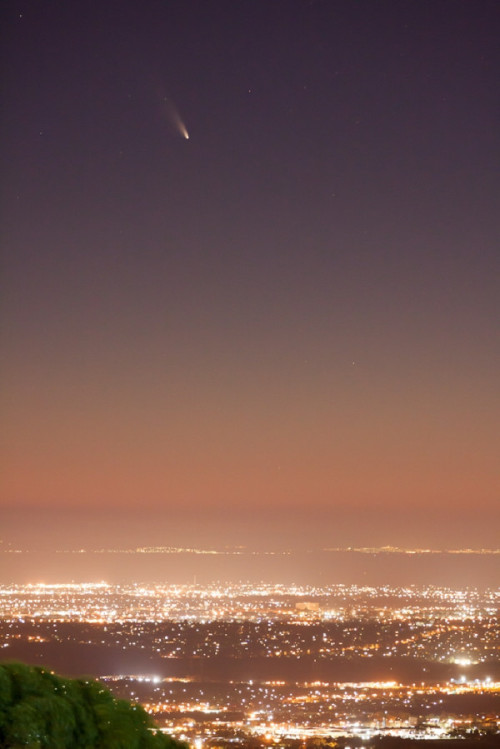
Comet PanSTARRS
Gorgeous picture of Comet PanSTARRS taken by Carl Gruber on March 2, 2013 at a mountain lookout in Melbourne.
People forget that “within the habitable zone” means habitable for us and ‘life as we know it.’
Being that we are completely unfamiliar with life and science outside of what we’ve encountered, it is entirely possible for 'life as we don’t yet know it’ to exist outside of what we personally consider a habitable zone.
-
 ishroux liked this · 2 years ago
ishroux liked this · 2 years ago -
 iwillruletheuniverse reblogged this · 4 years ago
iwillruletheuniverse reblogged this · 4 years ago -
 ohfallingstar reblogged this · 4 years ago
ohfallingstar reblogged this · 4 years ago -
 parody-the-emi liked this · 4 years ago
parody-the-emi liked this · 4 years ago -
 tinkyrubi liked this · 5 years ago
tinkyrubi liked this · 5 years ago -
 anjaelamica-blog liked this · 5 years ago
anjaelamica-blog liked this · 5 years ago -
 whynotramble liked this · 5 years ago
whynotramble liked this · 5 years ago -
 the-rose-of-versailles reblogged this · 5 years ago
the-rose-of-versailles reblogged this · 5 years ago -
 superlucyjin reblogged this · 5 years ago
superlucyjin reblogged this · 5 years ago -
 robosparky liked this · 5 years ago
robosparky liked this · 5 years ago -
 fahidbaby liked this · 5 years ago
fahidbaby liked this · 5 years ago -
 notaplatebutatrey liked this · 6 years ago
notaplatebutatrey liked this · 6 years ago -
 lestat-gontier liked this · 6 years ago
lestat-gontier liked this · 6 years ago -
 cmay123 reblogged this · 6 years ago
cmay123 reblogged this · 6 years ago -
 cmay123 liked this · 6 years ago
cmay123 liked this · 6 years ago -
 porewit reblogged this · 6 years ago
porewit reblogged this · 6 years ago -
 almassa liked this · 6 years ago
almassa liked this · 6 years ago -
 deathbreast liked this · 6 years ago
deathbreast liked this · 6 years ago -
 coffeefrenchandhistory reblogged this · 6 years ago
coffeefrenchandhistory reblogged this · 6 years ago -
 coffeefrenchandhistory liked this · 6 years ago
coffeefrenchandhistory liked this · 6 years ago -
 shy-and-reserved reblogged this · 6 years ago
shy-and-reserved reblogged this · 6 years ago -
 joslynuniverse liked this · 6 years ago
joslynuniverse liked this · 6 years ago -
 twisted-falcon liked this · 6 years ago
twisted-falcon liked this · 6 years ago -
 cute-smol-geek liked this · 6 years ago
cute-smol-geek liked this · 6 years ago -
 grumpyhedgehogs reblogged this · 6 years ago
grumpyhedgehogs reblogged this · 6 years ago -
 gabriel4sam reblogged this · 6 years ago
gabriel4sam reblogged this · 6 years ago -
 gabriel4sam liked this · 6 years ago
gabriel4sam liked this · 6 years ago